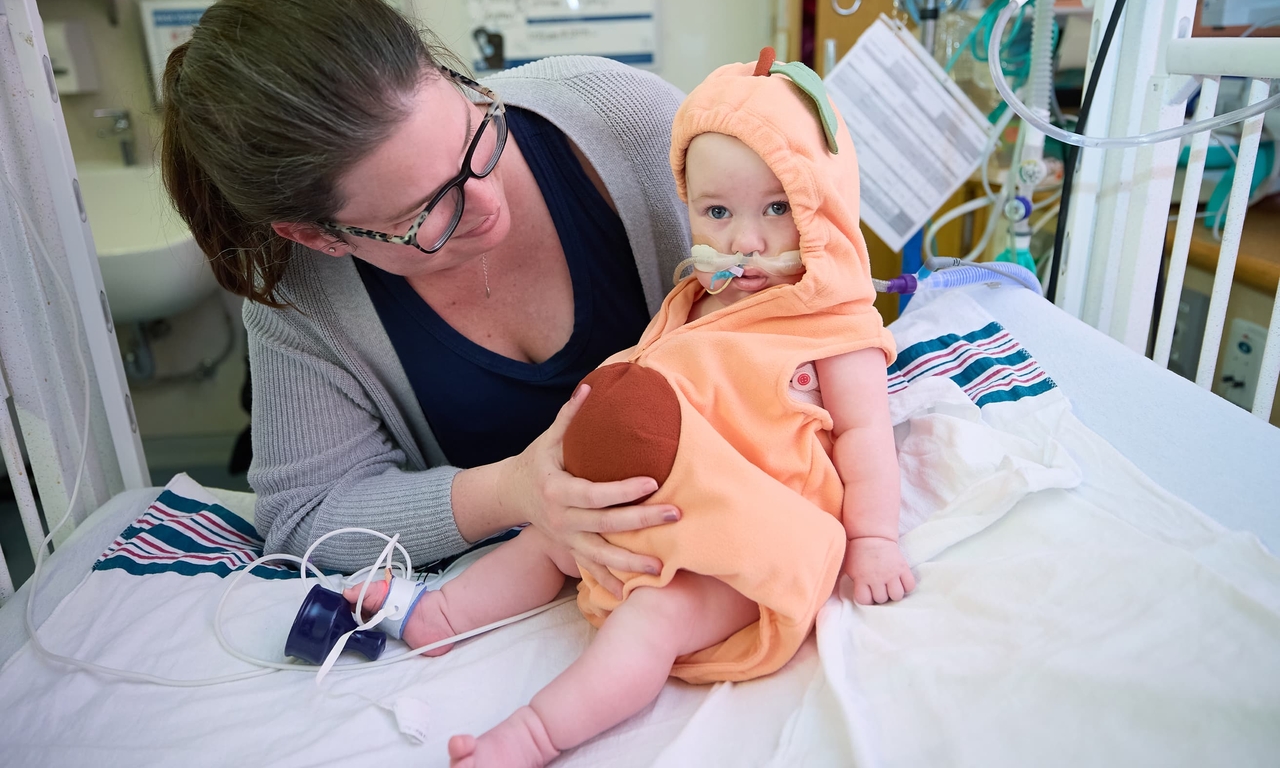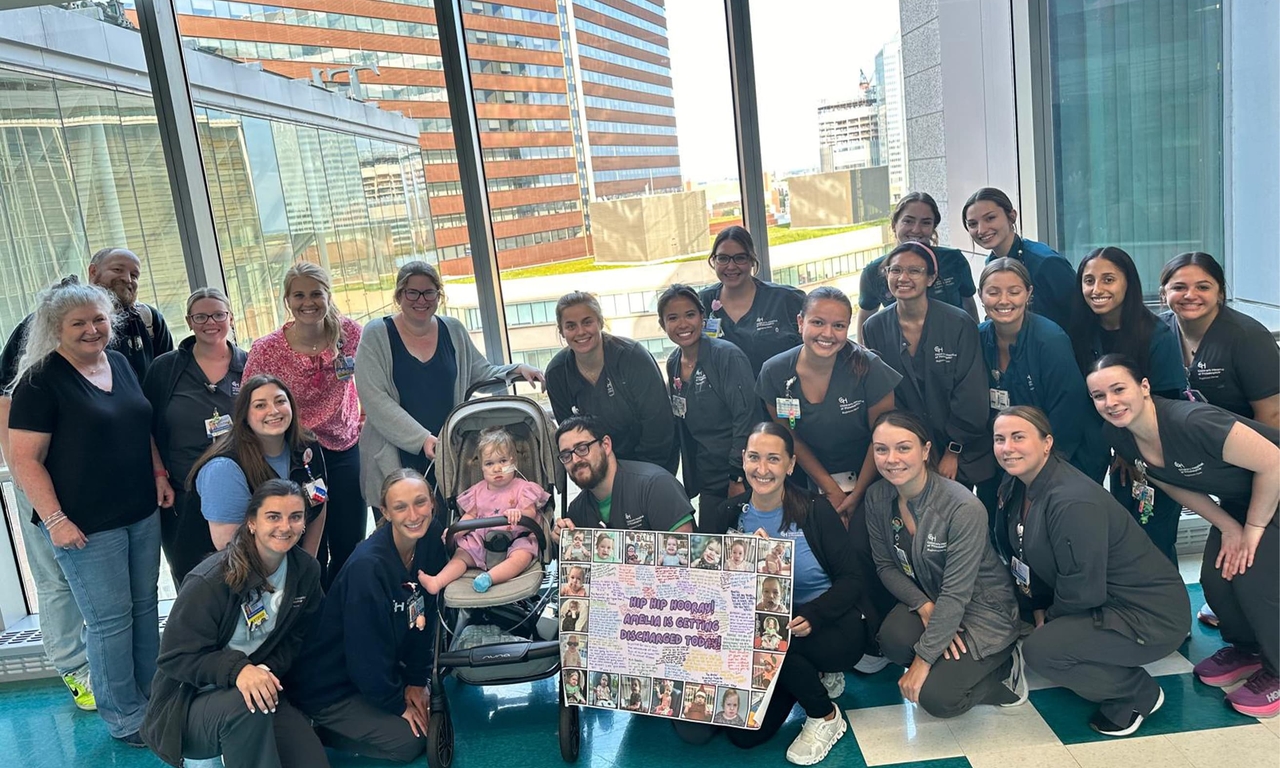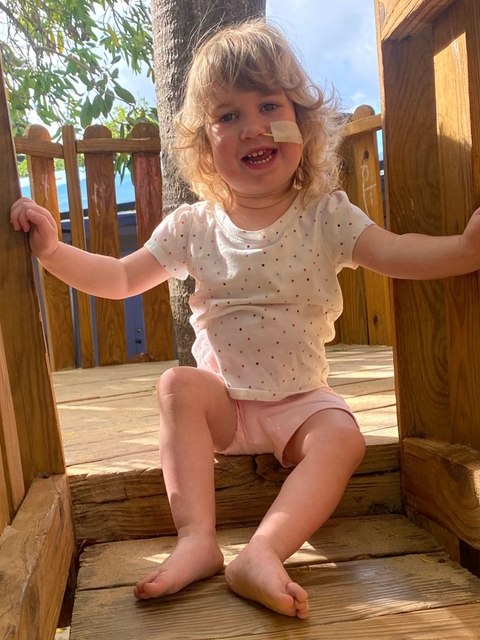Amelia’s Story: A Long Road of Care for Omphalocele
Amelia’s Story: A Long Road of Care for Omphalocele

When Amelia’s parents, Catherine and Casey, learned they were expecting, joy filled their hearts. Their IVF journey had been one of patience and hope. However, 10 weeks into the pregnancy, an ultrasound revealed a potential concern, and by 13 weeks, it was confirmed: Amelia had a giant omphalocele, a rare birth defect where organs develop outside the body in a thin sac. Their doctor in the Cayman Islands said Amelia’s condition required specialized care beyond what was available locally.
Determined to give their baby the best possible chance, Catherine and Casey turned to Children’s Hospital of Philadelphia (CHOP). They found hope at CHOP’s Richard D. Wood Jr. Center for Fetal Diagnosis and Treatment (CFDT), which has extensive experience caring for babies with omphalocele. When Catherine called the CFDT, she was comforted by fetal therapy nurse coordinator Heather Emig, BSN, RNC-OB, who assured her, “We do this all the time — don’t worry, we’ve got it.”
Birth and early challenges with giant omphalocele
The family traveled to Philadelphia for a comprehensive evaluation. Amelia’s omphalocele was extensive, including her liver, intestines, spleen, pancreas, gall bladder and half her stomach. She was also diagnosed with pulmonary hypoplasia, which meant her lungs were underdeveloped, functioning at only about 47% to 49% capacity.
Catherine continued prenatal care in the Cayman Islands, then relocated to Philadelphia a month before delivery. At CHOP, babies with liver in the omphalocele are delivered by C-section to protect the omphalocele sac.
Before the C-section, as Catherine lay in the operating room, nerves gave way to tears. But a midwife reassured her, saying, “It’s OK to be scared, but you’re in great hands. We’re going to meet your baby today!”
Amelia was born in CHOP’s Garbose Family Special Delivery Unit (SDU), the world's first birthing facility within a freestanding children's hospital, designed just for pregnant women carrying babies with known birth defects. The SDU team, experienced in providing critical “golden hour” care, stabilized Amelia immediately after birth. They assessed her and wrapped the omphalocele sac with a sterile dressing.

The golden hour
The first hour after a baby is born is an especially critical transition period. Learn how CHOP’s unique Newborn Stabilization and Resuscitation Team provides dedicated support to babies with known congenital anomalies during this time.

Before heading to CHOP’s Harriet and Ronald Lassin Newborn/Infant Intensive Care Unit (N/IICU), Amelia was brought to Catherine’s bedside. Facilitating such a meaningful moment of connection amid the whirlwind of medical care is just one of the many things that sets the SDU team apart.
Amelia faced significant hurdles, including pulmonary hypoplasia, chronic respiratory failure and feeding difficulties. She needed a nasogastric feeding tube (NG tube) and oxygen. She spent 16 months at CHOP, with the first nine in the N/IICU and the rest in the Pulmonary Unit.
When she was ready to go home to the Cayman Islands, CHOP Global Patient Services coordinated with local medical teams to ensure a smooth transfer of care. After a few months home, she transitioned off oxygen.
Closure surgery begins new chapter

CHOP uses a “paint and wait” technique for giant omphalocele repairs, allowing the child’s body to grow and accommodate the organs gradually. When Amelia was a little over 2 years old, she returned to CHOP for surgery to complete the repair. CHOP attending surgeon Holly L. Hedrick, MD, closed her abdominal wall, a critical step in Amelia’s journey. During the procedure, Dr. Hedrick surgically inserted a gastrostomy tube (G-tube) directly into Amelia’s stomach through the abdominal wall, for long-term feeding support.
"The surgery was super quick, and her recovery was amazing,” said Catherine, about a week after the procedure. “You'd never know that she just had massive abdominal surgery.”
Dr. Hedrick is Co-director of CHOP’s Pulmonary Hypoplasia Program (PHP). She will continue to follow Amelia’s progress, collaborating with her family to monitor her health and development.
It’s been a long journey for Amelia’s family. As they look to the future, they are filled with hope, knowing her story has really just begun.